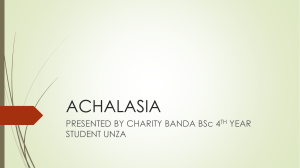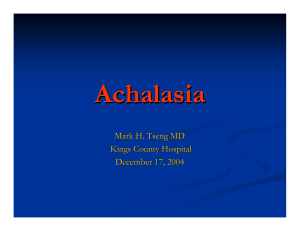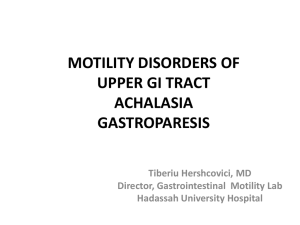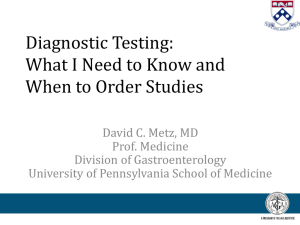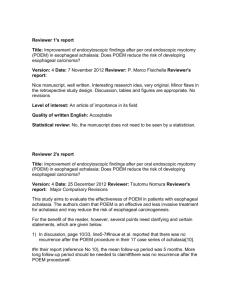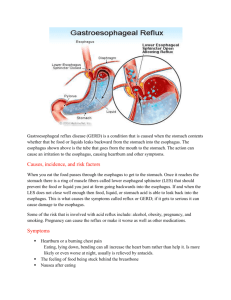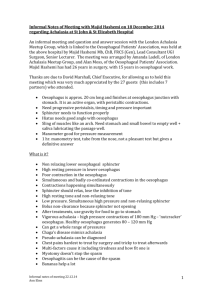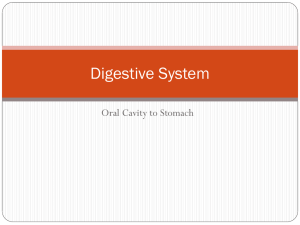Achalasia pamphlet - Achalasia Foundation
advertisement
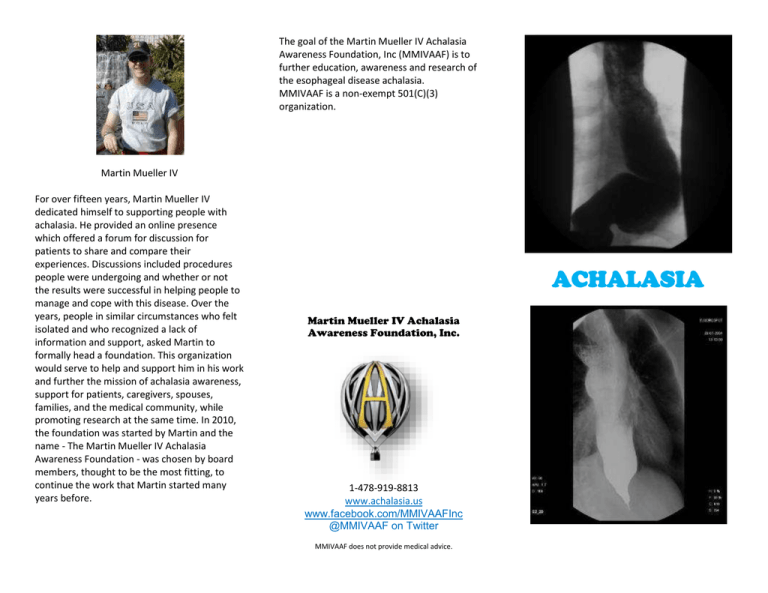
The goal of the Martin Mueller IV Achalasia Awareness Foundation, Inc (MMIVAAF) is to further education, awareness and research of the esophageal disease achalasia. MMIVAAF is a non-exempt 501(C)(3) organization. Martin Mueller IV For over fifteen years, Martin Mueller IV dedicated himself to supporting people with achalasia. He provided an online presence which offered a forum for discussion for patients to share and compare their experiences. Discussions included procedures people were undergoing and whether or not the results were successful in helping people to manage and cope with this disease. Over the years, people in similar circumstances who felt isolated and who recognized a lack of information and support, asked Martin to formally head a foundation. This organization would serve to help and support him in his work and further the mission of achalasia awareness, support for patients, caregivers, spouses, families, and the medical community, while promoting research at the same time. In 2010, the foundation was started by Martin and the name - The Martin Mueller IV Achalasia Awareness Foundation - was chosen by board members, thought to be the most fitting, to continue the work that Martin started many years before. ACHALASIA Martin Mueller IV Achalasia Awareness Foundation, Inc. 1-478-919-8813 www.achalasia.us www.facebook.com/MMIVAAFInc @MMIVAAF on Twitter MMIVAAF does not provide medical advice. What is achalasia? Achalasia is a disorder of the esophagus that makes it difficult to swallow solid or liquid foods. The act of swallowing causes a wave or peristalsis in the esophagus. Peristalsis is the succession of waves of involuntary muscular contractions in the esophagus, stomach and the intestines, where it affects transport of food and waste products from the mouth to the colon. This motion of peristalsis is diminished, erratic or no longer functioning. Heartburn and chest pain also may be present with achalasia. The condition occurs when the (LES) lower esophageal sphincter muscle or cardiac sphincter (located between the esophagus and the stomach) doesn’t relax as much as it should, which makes it hard for food to pass from the esophagus into the stomach. What causes achalasia? The cause is unknown, but anxiety and emotional tension seem to aggravate achalasia and precipitate attacks. Is there a cure for achalasia? At this time there is no known cure for achalasia, there is only management of the symptoms, and treatments to help our long term health. Achalasia does not go away, your symptoms may subside sometimes, but the disease unfortunately does not go away. Symptoms: Regurgitation of food Heartburn Chest pain after eating Cough Weight loss How rare is achalasia? Achalasia is a rare disorder—only about 2,000 people in the U.S. are diagnosed each year. Because the condition is so rare, it’s helpful to choose a medical center with experience in diagnosing and treating this disease. Diagnosing achalasia: Proper diagnosis is the first step toward appropriate and effective treatment. X-ray – The chest and upper GI (gastrointestinal/digestive system) tract Endoscopy - Insertion of a thin, flexible tube down the throat, through the esophagus and into the stomach. The endoscope is equipped with a tiny camera that enables the physician to actually see inside the esophagus and other organs. This test is important to make sure cancer is not present. Manometry - This is a test that measures the strength and coordination of the muscles in the esophagus. For this test, a very thin tube is passed through the nose and down to the stomach. The test then measures esophageal muscle function while the patient swallows sips of water. Manometry also evaluates the function and relaxation of the valve (lower esophageal sphincter) located between the esophagus and stomach. Treatments Laparoscopic esophageal myotomy – minimally invasive surgical procedure performed through tiny incisions using miniaturized instruments. The surgeon severs muscles of the valve located between the esophagus and stomach, which makes it easier for food to pass through. Endoscopic dilation to widen the lower esophagus Botulin toxin (Botox) and injection to paralyze the sphincter muscle and prevent muscle spasms. Medications We can’t prevent Achalasia. But if you do have achalasia, it can make a difference if you: Find out early Get proper treatment right away
